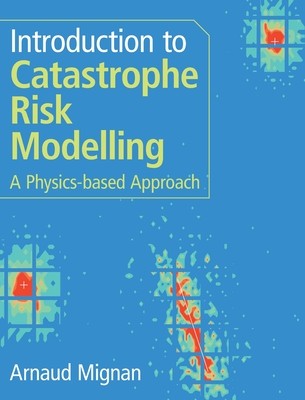
- We will send in 10–14 business days.
- Author: Arnaud Mignan
- Publisher: Cambridge University Press
- ISBN-10: 1009437380
- ISBN-13: 9781009437387
- Format: 20.1 x 24.4 x 2.5 cm, kieti viršeliai
- Language: English
- SAVE -10% with code: EXTRA
Reviews
Description
Focusing on the physics of the catastrophe process and addressed directly to advanced students, this innovative textbook quantifies dozens of perils, both natural and man-made, and covers the latest developments in catastrophe modelling. Combining basic statistics, applied physics, natural and environmental sciences, civil engineering, and psychology, the text remains at an introductory level, focusing on fundamental concepts for a comprehensive understanding of catastrophe phenomenology and risk quantification. A broad spectrum of perils are covered, including geophysical, hydrological, meteorological, climatological, biological, extraterrestrial, technological and socio-economic, as well as events caused by domino effects and global warming. Following industry standards, the text provides the necessary tools to develop a CAT model from hazard to loss assessment. Online resources include a CAT risk model starter-kit and a CAT risk modelling 'sandbox' with Python Jupyter tutorial. Every process, described by equations, (pseudo)codes and illustrations, is fully reproducible, allowing students to solidify knowledge through practice.
EXTRA 10 % discount with code: EXTRA
The promotion ends in 22d.09:12:34
The discount code is valid when purchasing from 10 €. Discounts do not stack.
- Author: Arnaud Mignan
- Publisher: Cambridge University Press
- ISBN-10: 1009437380
- ISBN-13: 9781009437387
- Format: 20.1 x 24.4 x 2.5 cm, kieti viršeliai
- Language: English English
Focusing on the physics of the catastrophe process and addressed directly to advanced students, this innovative textbook quantifies dozens of perils, both natural and man-made, and covers the latest developments in catastrophe modelling. Combining basic statistics, applied physics, natural and environmental sciences, civil engineering, and psychology, the text remains at an introductory level, focusing on fundamental concepts for a comprehensive understanding of catastrophe phenomenology and risk quantification. A broad spectrum of perils are covered, including geophysical, hydrological, meteorological, climatological, biological, extraterrestrial, technological and socio-economic, as well as events caused by domino effects and global warming. Following industry standards, the text provides the necessary tools to develop a CAT model from hazard to loss assessment. Online resources include a CAT risk model starter-kit and a CAT risk modelling 'sandbox' with Python Jupyter tutorial. Every process, described by equations, (pseudo)codes and illustrations, is fully reproducible, allowing students to solidify knowledge through practice.


Reviews